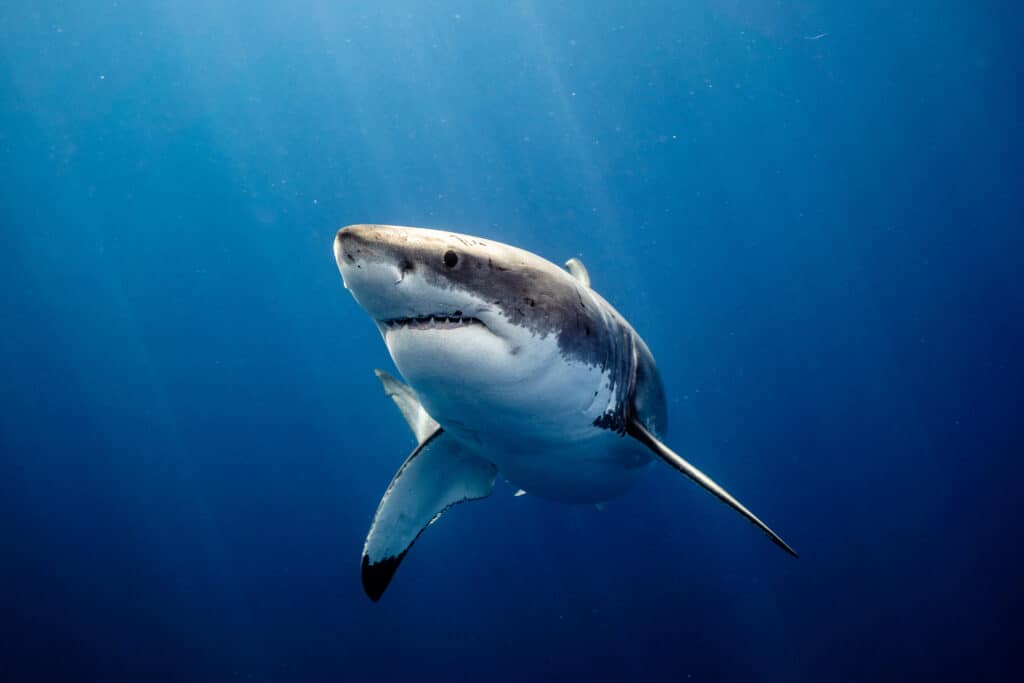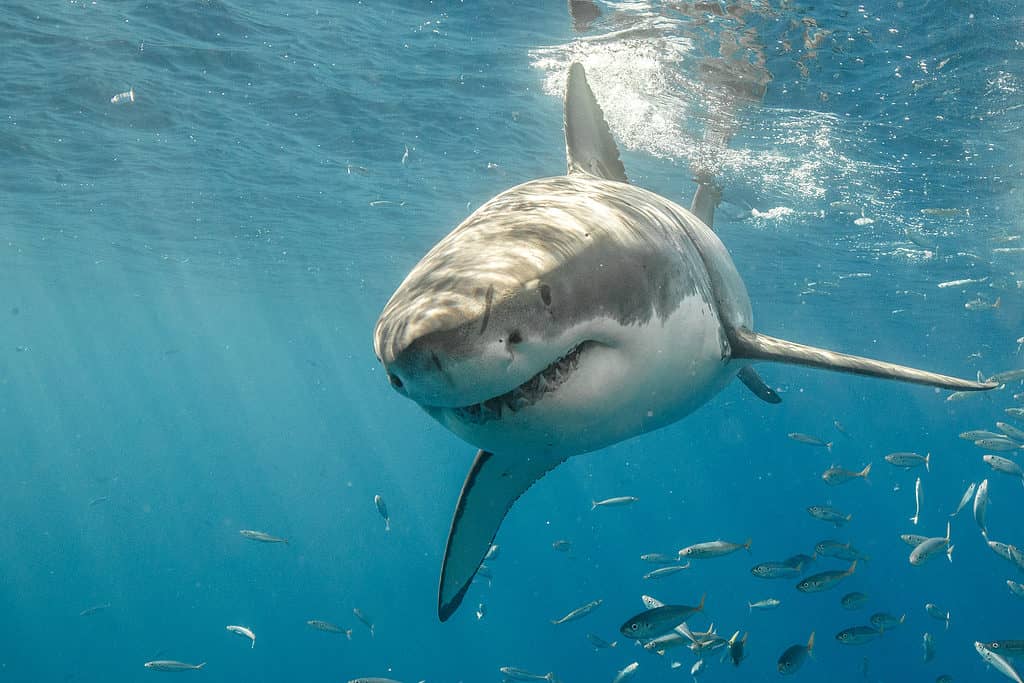Great white sharks have a terrifying reputation. They are apex predators, that reportedly can reach lengths over 30 feet! Technically though, the largest great white shark ever observed was around 20 feet long. Deep Blue, a large female great white, was first spotted in the 1990s. However, the first photograph of this impressive giant wasn’t taken until 2013. The largest great white shark in Australia isn’t as big, but it is just as impressive! Follow along to discover the largest great white shark ever found off the coast of Australia.
What is the Largest Great White Shark Ever Found Off the Coast of Australia?
The largest great white shark ever found in Australia is often debated. In 1987, Vic Hislop caught a 20-foot great white right off the Victorian coastline. Victoria is Australia’s second smallest state bordered by the South Pacific and Indian Oceans. Sharks are no stranger to these waters. Off the coast of Victoria, you can find tiger sharks, gummy sharks, great whites, and grey nurse sharks.
Before this, two outrageous shark records held the attention of people. One record was of a 36-foot great white shark caught off the coast of Port Fairy in the 1870s. Imagine seeing a 36-foot great white! However, this record wasn’t true. In 1970, experts examined the remains of this record and determined the shark was likely 16.4 feet long, not 36!

The largest great white shark ever found off the coast of Australia was about 20 feet long.
©Jsegalexplore/Shutterstock.com
Are Great White Sharks Common in Australia?
Great whites aren’t rare in Australia. The population is sizable, although hard to estimate. While hard to calculate the exact number of great whites off the coast of Australia, CSIRO estimates there are about 5,460 great whites in the eastern population. This number though may be as high as 12,802.
These large apex predators though aren’t the only sharks that live off the coast of Australia. Other common sharks in Australia include bull sharks, whale sharks, great hammerhead sharks, and thresher sharks.
Although there are more than 100 shark species off the coast of Australia, attacks are rare. There are about 20 or less attacks a year. In 2021, there were 24 human/shark incidents in Australia. Considering, that millions of people visit beaches in Australia, this number isn’t surprising.
About Great Whites

Great white sharks are the ocean’s apex predators.
©iStock.com/ShaneMyersPhoto
Now that we’ve discovered the largest great white shark ever found off the coast of Australia, let’s learn more about great whites. Great whites are interesting animals. While they’ve captured our attention for decades, there is still a lot about this creature that remains a mystery. For instance, mating between great whites isn’t completely documented. These deep-sea sharks can also dive as deep as 10,000 feet, far enough that we can only speculate their behaviors.
Description and Size
Great white sharks are one of the easiest sharks to identify. They are large and thick sharks with white undersides and grey dorsal areas. Great whites also have large eyes and rows of sharp serrated teeth behind the main ones.
What really sets them apart from other shark species though is their size. Great whites are massive. Females are a lot larger than males. On average, an adult male great white is 11 to 13 feet long, while females are 15 to 16. Despite these averages, sharks about 20 feet long have been recorded. Great whites also weigh anywhere from 1,150 to 2,400 pounds. Great white pups at birth are around 5 feet long.
Diet
It’s easier to ask what a great white won’t eat than what they do. Despite their reputation for being aggressive, great whites aren’t always hungry. This is likely why scientists have documented great whites swimming with other marine animals, including other sharks and even dolphins. Humans are often in the water with great whites without knowing!
Great whites generally eat seals, large fish, and squids. It isn’t uncommon to see great whites, either alone or in groups, feeding near seal and sea lion colonies. These opportunistic feeders may also scavenge dead whales.
Predators

Some orca whales hunt great white sharks in pods for their livers.
©Tory Kallman/Shutterstock.com
It’s hard to imagine great whites having predators. These large fish have few predators. The only natural known predators are orca whales. Killer whales have been observed killing great whites to eat certain body parts like their livers. Great white sharks may even swim far away in fear at the sight of an orca whale. Sometimes, they don’t return to the spot. Although great whites are feared, their numbers are decreasing. They are listed as Vulnerable on the IUCN Red List.
Distribution and Habitat
Great white sharks are highly migratory. They can travel over 2,500 miles a year. These large fish live in almost all coastal and offshore waters with temperatures from 50 and 80°F. You can find great white sharks from Maine to the Gulf of Mexico and U.S. Caribbean. They are especially common in California but may be spotted in Hawaii and Alaska.
The photo featured at the top of this post is © slowmotiongli/Shutterstock.com
Thank you for reading! Have some feedback for us? Contact the AZ Animals editorial team.







